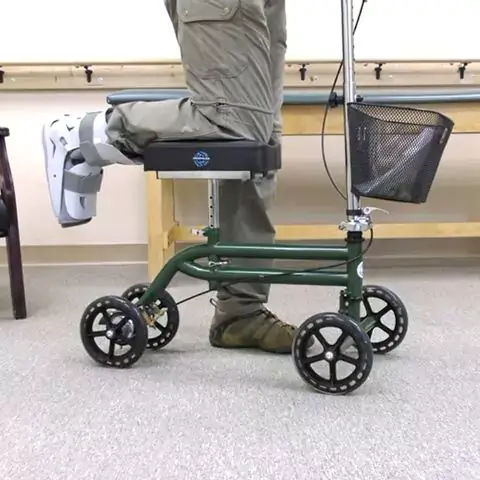Electric scooter motors work by converting electrical energy from the battery into mechanical energy, which propels the scooter forward. The motor uses magnets and coils to create a rotating magnetic field that spins the scooter’s wheels.
As the electric current flows through the coils, it interacts with the magnetic field, generating a force that moves the scooter. This process allows the scooter to move without the need for manual propulsion, making it a convenient and eco-friendly mode of transportation.

Contents
Understanding The Electric Scooter Motor Basics
Electric scooter motors function by converting electrical energy into mechanical energy. They come in different types, including brushless and brushed motors. Brushless motors are more efficient and require less maintenance than brushed motors. The key components of an electric scooter motor include a rotor, stator, and magnets.
The rotor spins when electricity passes through the stator, creating a rotating magnetic field. This rotating field interacts with the magnets, causing the rotor to rotate. The rotation of the rotor is transferred to the wheels of the scooter, propelling it forward.
Electric scooter motors are designed to provide a smooth and quiet ride, making them a popular choice for many commuters and enthusiasts. Understanding the basics of electric scooter motors is crucial for both users and technicians to ensure optimal performance and longevity.
Exploring The Inner Workings Of Electric Scooter Motors
Exploring the inner workings of electric scooter motors, let’s start with brushed motors. These motors use brushes to deliver power, creating a current in the coils and generating a magnetic field. The brushes make contact with a commutator, which switches the direction of current flow and keeps the motor running.
However, these motors have limited efficiency and require regular maintenance due to the brushes wearing out over time. On the other hand, brushless motors are a newer technology that eliminates the need for brushes. Instead, they use sensors to detect the position of the rotor and electronically switch the current flow, resulting in a more efficient and durable motor.
They are also quieter and require less maintenance. Understanding the inner workings of electric scooter motors helps us appreciate the engineering behind these eco-friendly vehicles.
Unleashing The Power Of Electric Scooter Motors
Electric scooter motors work by converting electrical energy into mechanical power, propelling the scooter forward. The power output of these motors determines the scooter’s speed and acceleration. Factors like motor design, voltage, and current affect the performance of electric scooter motors.
By optimizing these factors, the efficiency of the scooter’s motor can be maximized. Electric scooter motors utilize innovative technology to provide a smooth and reliable ride experience. Understanding how these motors work is crucial for ensuring an enjoyable and efficient ride.
So, next time you hop on an electric scooter, take a moment to appreciate the hidden power behind your smooth journey. Ride on!
Electric Scooter Motor Control Systems
Electric scooter motors are crucial components that power these eco-friendly vehicles. The motor control systems play a significant role in ensuring smooth and efficient operation. Motor controllers are responsible for regulating the electric current supplied to the motor, controlling its speed, and providing safety features.
There are different types of motor controllers available for electric scooters, each with its own unique features and functionalities. One notable feature of electric scooter motors is regenerative braking, which helps to recharge the battery while slowing down the scooter.
This system works by converting the kinetic energy of the scooter into electrical energy, which is then stored in the battery for later use. The benefits of regenerative braking include increased efficiency, extended battery life, and reduced wear and tear on the braking system.
Overall, understanding how electric scooter motors and their control systems work is essential for optimizing the performance and longevity of these eco-friendly vehicles.
Frequently Asked Questions
How Does An Electric Scooter Motor Work?
Electric scooter motors work by converting electrical energy into mechanical energy, which powers the scooter’s movement.
What Powers An Electric Scooter Motor?
Electric scooter motors are powered by rechargeable lithium-ion batteries, which provide the necessary electrical energy for propulsion.
How Fast Can An Electric Scooter Motor Go?
The speed of an electric scooter motor varies, but most models can reach speeds of up to 15 to 20 miles per hour.
How Long Do Electric Scooter Motors Last?
The lifespan of an electric scooter motor depends on various factors, but with proper maintenance, they can last for several years.
Can Electric Scooter Motors Be Repaired Or Replaced?
Yes, electric scooter motors can be repaired or replaced if they encounter any issues or if higher performance is desired.
Final Thoughts
To sum up, electric scooter motors are the heart of these innovative transportation devices. They work by converting electrical energy into mechanical energy, which powers the wheels and propels the scooter forward. Through a combination of magnets, coils, and electrical current, the motor generates a rotating magnetic field that drives the motor shaft.
This rotational motion is then transferred to the wheels through a transmission system, allowing the scooter to move efficiently and smoothly. The design and components of electric scooter motors vary, but they all aim to provide users with a reliable and efficient mode of transportation.
Whether it is a brushless or brushed motor, the goal is to strike a balance between power, speed, and durability. As the popularity of electric scooters continues to grow, advancements in motor technology will undoubtedly enhance performance and pave the way for more exciting and sustainable transportation options in the future.


